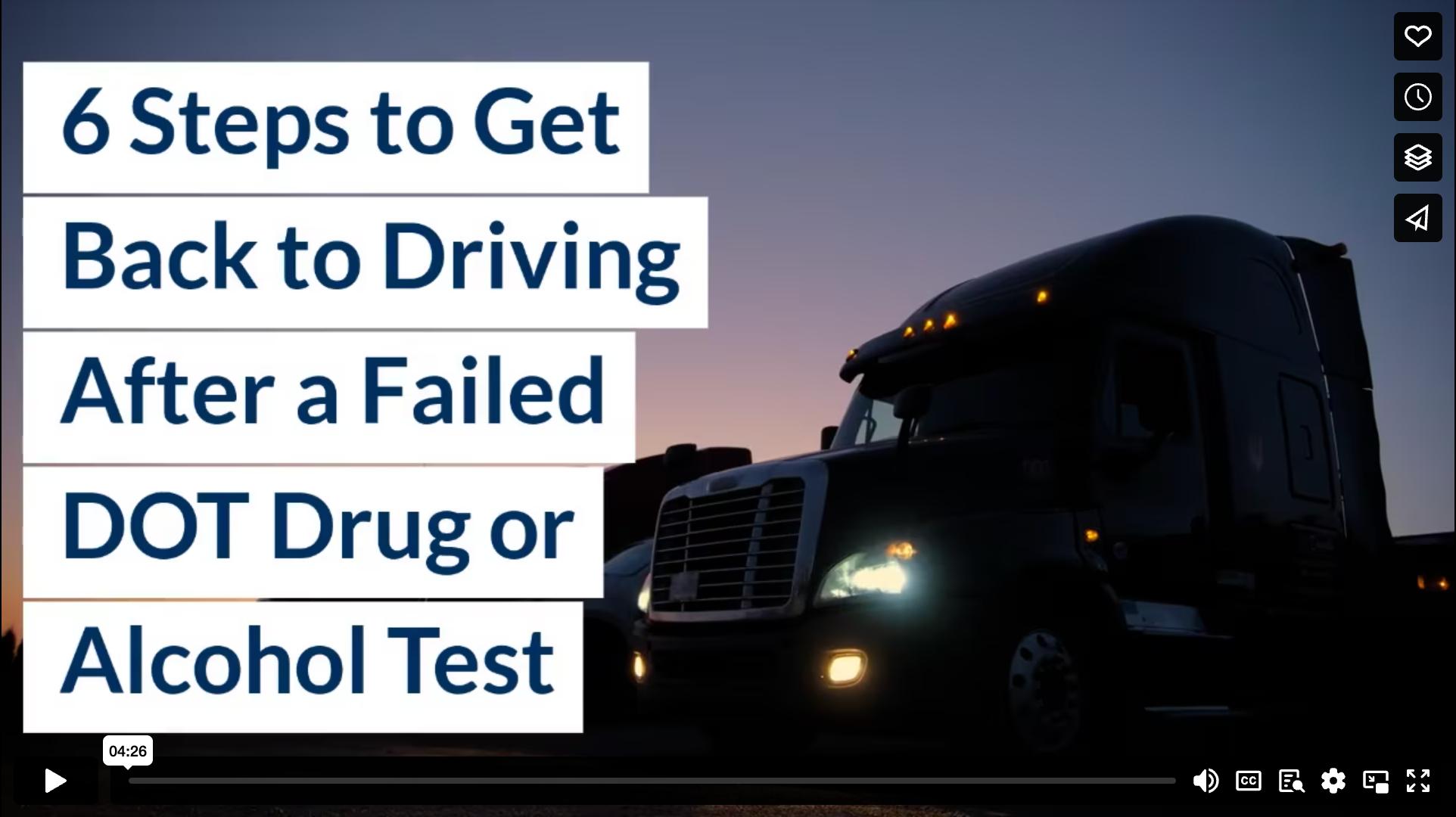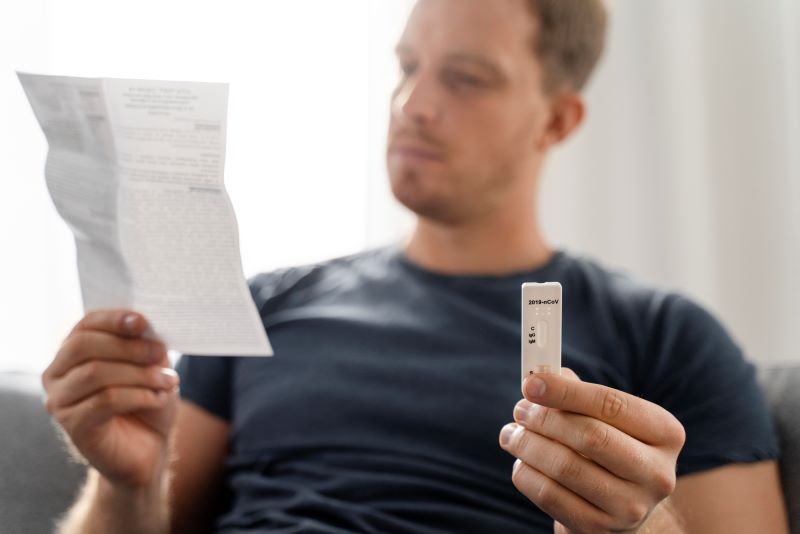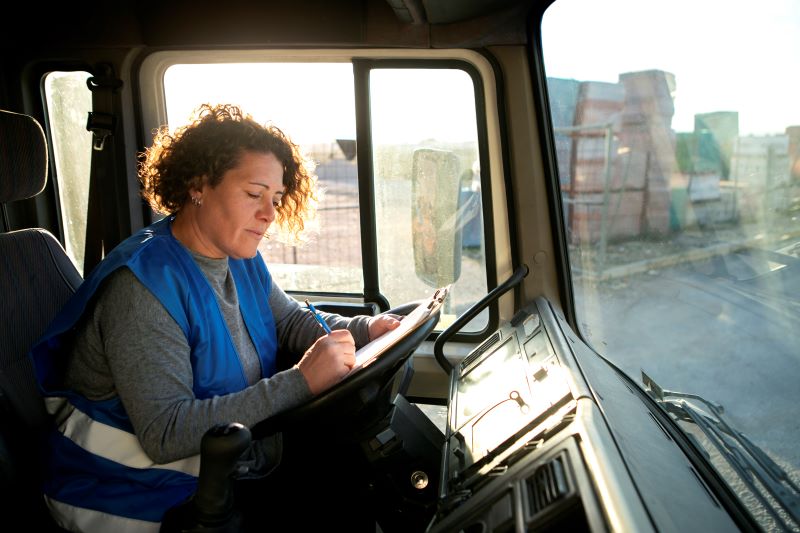If you are a commercial driver, failing an official drug test is a big deal that will put your career on hold. The good news is that you can return to work after a failed drug test if you follow the six steps below.
Who Needs to Complete the DOT Return-to-Duty Protocol?
As a commercial driver, you need to complete the DOT Return-to-Duty (RTD) protocol if:
- You test positive on a DOT drug test
- You get a positive result (.04 BAC or above) on a DOT alcohol test
- You refuse a DOT-required drug or alcohol test (this can include shy lung or bashful bladder without a medical reason)
- You test positive on a drug or alcohol test administered because the motor carrier has reasonable suspicion that you are consuming alcohol while on the job or within four hours of starting work or using a restricted substance (such as marijuana)
How to Handle a Failed Drug Test
1. Your Employer Will Remove You From Safety-Sensitive Work
Immediately after the results of a failed drug test come back, your employer will remove you from all safety-critical functions. This means that even if you are under load, your employer will require you to pull over immediately. You will not be permitted to return to driving until you have completed the RTD process.
2. Schedule an Evaluation with a Substance Abuse Professional (SAP)
Your employer will refer you to a Substance Abuse Professional (SAP). Substance Abuse Professionals are trained psychiatrists and counselors who specialize in treating substance abuse disorders. The provider must be registered on the DOT SAP registry. The SAP you meet with will determine your treatment protocol.
Your employer is required to provide you with a reference for a SAP, but they cannot force you to go. It is up to you to schedule an appointment and meet face-to-face (or in some cases via video teleconference) for an evaluation with a SAP. Whether you or your employer pays for the SAP depends on your contract and labor-management agreements.
3. Complete an Education or Treatment Program
Your SAP will conduct an evaluation and then refer you to an appropriate education and/or treatment program. The programs can range from an online education course to a complete inpatient rehabilitation program. Your SAP will determine the required program based on their clinical evaluation of you.
4. Schedule a Second SAP Evaluation
Once you complete your treatment program, you must meet with your SAP for a follow-up evaluation. The SAP will use data from your treatment program as well as your face-to-face evaluation to determine whether the program was successful and will provide one of three conclusions:
- The treatment was successful, and you can start the RTD process to get back to work.
- The treatment was successful, but you still need extra outpatient therapy. You can still start the RTD process.
- You failed to complete the necessary treatment plan and continued follow-up treatment and evaluations are necessary. Therefore, you cannot yet return to work.
5. The SAP Will Send a Report
The SAP will order an RTD test. If the test comes back negative, it will be reported to the national Clearinghouse and the “prohibited” status will be removed from your record. The SAP will then send a report to your designated employer representative (DER). This report will state that your SAP has cleared you to return to work. The report will also outline any follow-up treatment, the number of follow-up tests required, and the time frame for those tests.
6. Complete the Required Follow-Up Testing
Your SAP will determine how many follow-up tests you will have to complete and within what time frame. These will be unannounced, supervised tests, and your employer will be responsible for making sure that they are completed. If you change jobs, your new employer will need to make sure you complete the required tests. You will be able to continue working as long as each follow-up test comes back negative.
From Setback to Success
While a failed DOT drug or alcohol test is a significant setback, there is hope. By completing the required evaluations and treatment programs, you can come back stronger and better than before. With humility, patience, and work, you can turn your setback into progress.
If you have experienced a positive DOT drug or alcohol test and are working through your RTD protocol, you might wonder, “Where can I find drug and alcohol screening near me?” Try TeamCME’s “find a location” feature to find certified DOT breath alcohol and drug testing in your area.
Video

Infographic
Failing an official drug test can significantly impact your career as a commercial driver. The good news is that you can return to work after a failed test. Discover this infographic to learn how to handle a failed drug test effectively.







